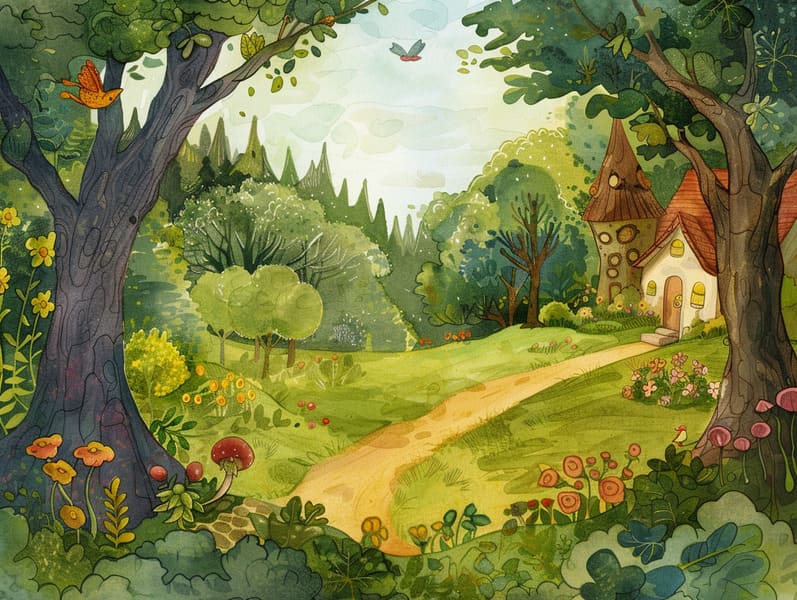Delving into the Background of Old Fairy Tales and Its Continued Majesty.
Delving into the Background of Old Fairy Tales and Its Continued Majesty.
Blog Article

Fairy tales have ancient roots. These tales have been narrated from one generation to the next millennia before they were ever written down. They came from a variety of backgrounds, including European traditions. They were initially narrated among older generations, often carrying themes and messages relevant to the societal norms and beliefs of the time.
Jacob and Wilhelm Grimm, Jacob and Wilhelm Grimm, were among the first to gather and publish many of these beloved fairy tales. Their collection, "Grimm's Fairy Tales," included stories like "The Little Glass Slipper," "Hansel and Gretel," and "Little Snow White," which have since become hallmarks in the world of beloved fairy tales. Similarly, H. C. Andersen's fanciful tales, such as "The Mermaid's Tale," and "The Little Duckling," have floated into hearts worldwide, cementing their place in the pantheon of iconic fairy tales.
Even though they are old, traditional fairy tales remain as impactful as ever, especially as children's night stories. These whimsical stories are now available in diverse formats, including beautifully illustrated books, enchanting animations, and internet fairy tales.
Their enduring popularity can be traced to several delightful features:
Valuable Lessons: Old fairy tales often whisper important moral lessons. Narratives like "The Story of the Boy Who Cried Wolf" teach the value of being truthful, while "The Tale of the Tortoise and the Hare" underline the values of tenacity and modesty. These narratives offer the young clear distinctions between right and wrong, helping to shape their moral compass in a mild yet profound way.
Sympathy and Perception: Old fairy tales frequently portray personalities facing challenges and problems, prompting kids to comprehend with their struggles and celebrate their triumphs. For instance, "The Tale of Beauty and the Beast" demonstrates the necessity of appreciating inner worth to appreciate the real character of a person, building compassion and recognition.
Cultural Knowledge: Many timeless fairy tales are steeped in the cultural contexts from which they blossomed. Reading these stories can provide fascinating glimpses into different beliefs, cultivating a sense of world understanding and respect.
Inventiveness and Imagination: The whimsical elements in traditional fairy tales—enchanted forests—unleash children’s fantasy worlds. These fairy tales transport readers to supernatural realms, inspiring imaginative ideas and a sense of fascination that lasts a lifetime.
Traditional fairy tales are not only fascinating but also pedagogical. They act as bewitching tools in advancing various mind and heart abilities in children. When timeless fairy tales are narrated, they nurture linguistic abilities by bringing new lexicon and intricate sentence structures. This practice also nurtures hearing perception and concentration, as young readers follow the story, looking forward to see what happens next.
Furthermore, deliberating the themes and characters of fairy tales can cultivate evaluative skills and analytical skills. Kids are educated to pinpoint patterns, anticipate outcomes, and know cause and find it here effect. These talks also help kids verbalize their thoughts and feelings, nurturing their emotional intelligence.
In today’s digital era, the availability of online fairy tales has made these narratives more within reach than ever. Internet resources and programs present extensive collections of famous fairy tales that can be browsed or listened to anytime, anywhere. Fairy tales recited are particularly common, presenting an interactive way for the young to experience these delightful tales. Spoken stories and spoken videos bring characters and settings to life, often supported by mesmerizing sound effects and musical scores that improve the story adventure.
The persistent attraction of old fairy tales lies in their ability to adjust to modern days while holding onto their core messages. Contemporary versions of these stories often present more representative characters and modern settings, making them understandable to today’s audience. However, the fundamental themes of spirit, sympathy, and fair-mindedness remain unchanged, continuing to appeal to readers of all ages.
Ancient fairy tales also offer a sense of serenity and comprehensibility. They extend a structured narrative with a recognizable beginning, middle, and end, often ending with the termination of conflicts and the triumph of morality over immorality. This consistency can be easing for the young, making known a sense of reliability in an fluctuating world.
Ancient fairy tales continue to enthrall and guide new generations, maintaining their magic and significance in modern society. As nighttime stories for kids, they yield a perfect blend of charm and enlightenment, encouraging moral values, empathy, and creativity. The prevalence of online storybooks and the popularity of fairy tales voiced make sure that these timeless tales remain reachable to new generations.
By continuing and releasing these narratives, we continue to treasure the rich tapestry of cultural heritage and cultural heritage. Whether you are experiencing a colorful picture book, enjoying a cyber collection, or listening to an spoken story, the wonder of ancient fairy tales is always within reach. These narratives emphasize of the unfading effect of fairy tales and its ability to bind us across epochs and places.
If you are viewing a vibrantly illustrated book, delving into a electronic collection, or listening via an read-aloud story, the loveliness of classic fairy tales is always within reach.
These fairy tales convey of the unwavering nature of fairy tales and its ability to bind us across epochs and places, casting a charm that charms and informs alike.